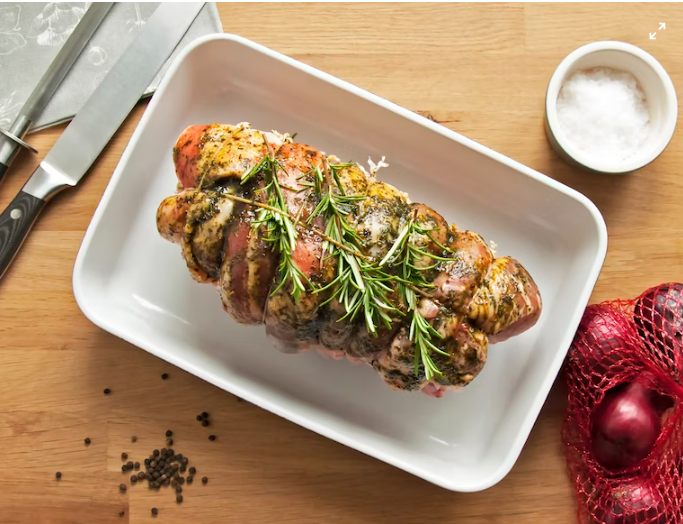Corned beef is a deli meat commonly found in grocery stores. It’s often served as sandwiches or in boiled dinners.
It’s also a popular ingredient in cuisine. Flat brisket half is cured in a salt brine to make corned beef. It’s typically cooked low and slow for hours to yield tender results.
It’s Easy To Make
While you can purchase corned beef brisket for sale in the deli meat section at the grocery store, there’s nothing like making your own. Homemade corned beef isn’t easy (you need to soak the brisket in the brine for days, up to an entire week), but it is worth the effort!
It is also very budget-friendly. While the high sodium content of cured meat may be an issue for some, it is possible to rinse and trim excess salt from corned beef to help reduce its sodium intake.
Making corned beef on the stovetop is as simple as rinsing the brisket, placing it in a pot, adding water and beer, then covering and simmering until tender. Add the spices from the seasoning packet or your own to taste and cook until it reaches an internal temperature of 145 degrees Fahrenheit.
When cooked properly, brisket is highly versatile. It can be used in sandwiches, corned beef hash, or dinners! You can also use it to add flavor and zest to soups, chili, tacos, or burnt ends.
It’s Delicious
The flavor of corned beef brisket is irresistible, whether in a boiled dinner with cabbage and potatoes or a sandwich. And although a traditional serving of corned beef isn’t healthy (one 4-ounce piece has 285 calories and 1,286 milligrams of sodium), it’s still a delicious treat.
Beef brisket is a high-quality source of protein and iron. It also contains zinc, selenium, and phosphorus. According to the University of Medical Center, eating a diet rich in lean proteins, like beef brisket, can help reduce your risk for heart disease and promote a healthy weight.
The best cuts of beef brisket include the flat and point cut. The balanced amount tends to be more challenging and is more uniform in shape, while the point cut has more fat and a richer flavor. Either way, choose grass-fed and finished meat to ensure you get the most nutrients possible. If you’re trying to limit sodium intake, rinsing your heart can help reduce its salt content. Just be sure to rinse it thoroughly.
It’s Healthy
Corned beef is a healthy choice when eaten in moderation and as part of a balanced diet. It provides a source of lean protein, vitamins, and minerals, including iron, niacin, and zinc. Typically, it is also low in fat.
It is important to note that while corned beef brisket is considered healthy, it is also high in sodium. The curing process creates a large amount of sodium in the meat. This can be problematic for people who need to follow a low-sodium diet. However, you can significantly reduce its sodium content by rinsing the meat and cooking it with a low amount of sodium.
The brisket is a prime beef cut from the steer’s lower part. It is a lean piece of meat with thick muscular fibers. The brisket is frequently used in sandwiches, tacos, burned ends, and chili and can be cooked tenderly. In addition, it is a well-liked option for breakfast dishes like corned beef hash. The brisket is often salt-cured to preserve the meat. The name comes from the curing process, which uses large rock salt kernels known as “corns” of salt.
It’s Budget-Friendly
Although it may seem like a luxurious meal you can only enjoy at restaurants, corned beef brisket is cheaper than other popular options. It is an excellent option for those looking to save money on their meals without sacrificing taste or quality.
Commercially prepared corned beef begins as regular beef brisket. Still it then goes through the curing process that gives it its characteristic vibrant pink color from the curing salt, often made with sodium nitrate (which also acts as a preservative for processed meats). During the brining and curing processes, the heart is usually seasoned with various ingredients, including pepper, onion powder, garlic powder, and smoked paprika.
The resulting flavor is a unique mix of saltiness, sweetness, and spice. This distinct combination makes the meat incredibly flavorful and helps it stand out.
If you are interested in preparing your homemade corned beef, it is essential to note that the process can be time-consuming. However, it is worth the effort as you can create a delicious dish perfect for your family or guests.
It’s Versatile
While corned beef is typically served on rye bread with cabbage, it also makes an excellent sandwich filling and can be enjoyed in many other ways. It can be used in a pot roast, soups, stews, chili, and other dishes.
The term “corned” describes how the meat was salted using big salt kernels, also referred to as “corns” of salt. This is what gives the meat its salty, savory flavor. This brine is usually accompanied by pickling spices and pink curing salt, which provides the heart with its vibrant pink color.
The lower breast of the steer, which lies behind the foreshank and below the first five ribs, is where the brisket is sliced. It’s a tough cut of meat that must be simmered for it to become tender. This is why it’s often associated with Jewish delis and kosher cuisine. Beef brisket is available in two different cuts – the lean flat and the more tender point cut. Both can be made into corned beef, but each has a unique flavor profile that can make them ideal for different recipes.










